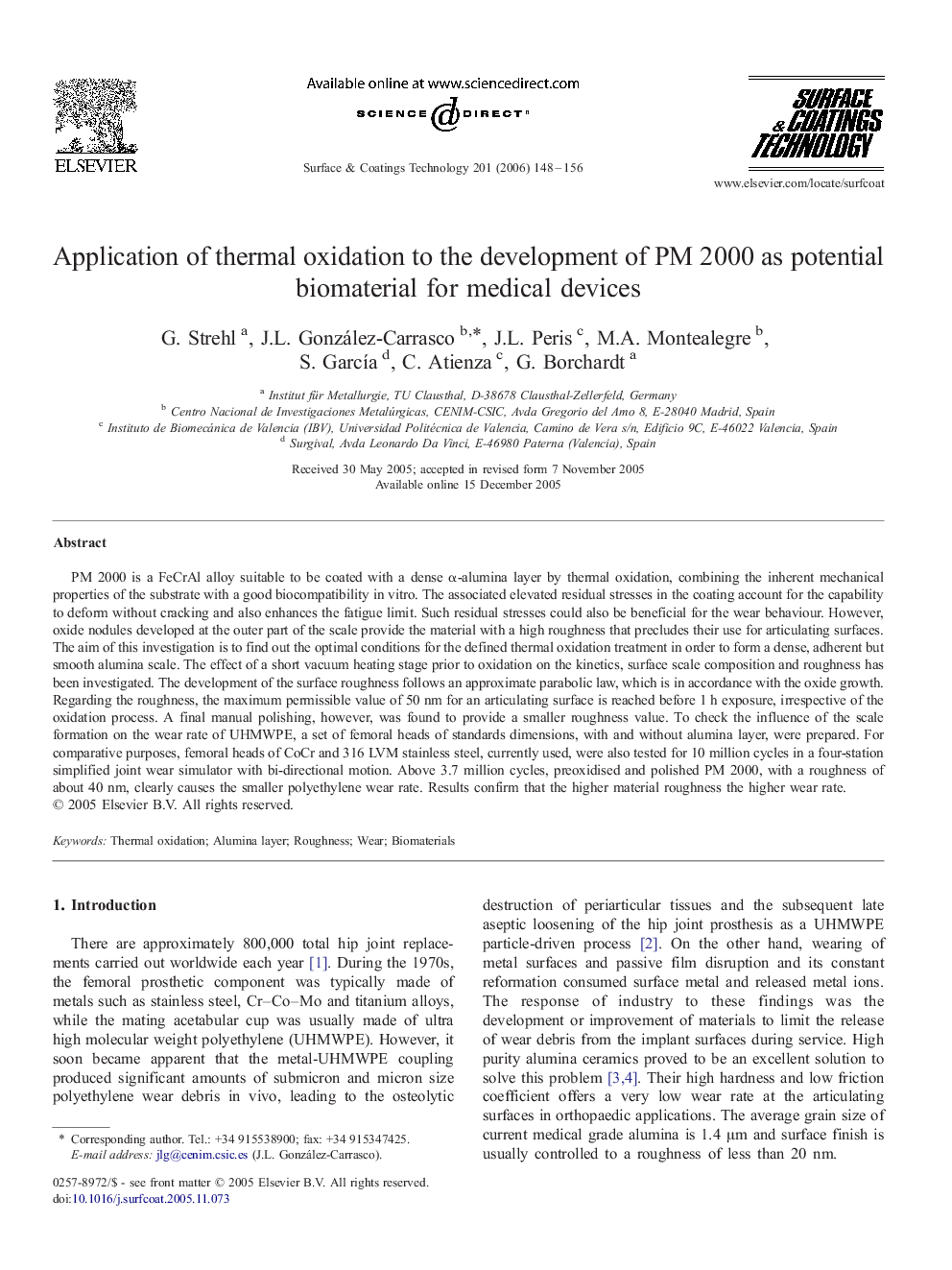| Article ID | Journal | Published Year | Pages | File Type |
|---|---|---|---|---|
| 1663070 | Surface and Coatings Technology | 2006 | 9 Pages |
PM 2000 is a FeCrAl alloy suitable to be coated with a dense α-alumina layer by thermal oxidation, combining the inherent mechanical properties of the substrate with a good biocompatibility in vitro. The associated elevated residual stresses in the coating account for the capability to deform without cracking and also enhances the fatigue limit. Such residual stresses could also be beneficial for the wear behaviour. However, oxide nodules developed at the outer part of the scale provide the material with a high roughness that precludes their use for articulating surfaces. The aim of this investigation is to find out the optimal conditions for the defined thermal oxidation treatment in order to form a dense, adherent but smooth alumina scale. The effect of a short vacuum heating stage prior to oxidation on the kinetics, surface scale composition and roughness has been investigated. The development of the surface roughness follows an approximate parabolic law, which is in accordance with the oxide growth. Regarding the roughness, the maximum permissible value of 50 nm for an articulating surface is reached before 1 h exposure, irrespective of the oxidation process. A final manual polishing, however, was found to provide a smaller roughness value. To check the influence of the scale formation on the wear rate of UHMWPE, a set of femoral heads of standards dimensions, with and without alumina layer, were prepared. For comparative purposes, femoral heads of CoCr and 316 LVM stainless steel, currently used, were also tested for 10 million cycles in a four-station simplified joint wear simulator with bi-directional motion. Above 3.7 million cycles, preoxidised and polished PM 2000, with a roughness of about 40 nm, clearly causes the smaller polyethylene wear rate. Results confirm that the higher material roughness the higher wear rate.
